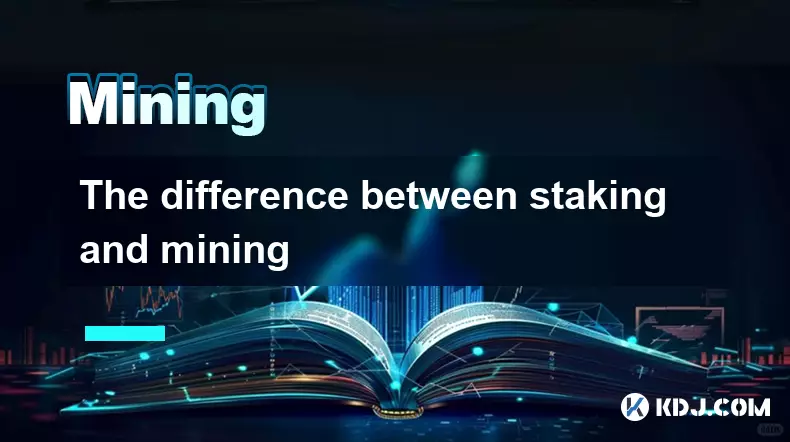-
 bitcoin
bitcoin $112715.707551 USD
-1.71% -
 ethereum
ethereum $4101.475385 USD
-3.01% -
 tether
tether $1.000644 USD
-0.02% -
 bnb
bnb $1207.619465 USD
-6.77% -
 xrp
xrp $2.501451 USD
-3.98% -
 solana
solana $202.947124 USD
-3.32% -
 usd-coin
usd-coin $1.000295 USD
0.04% -
 dogecoin
dogecoin $0.203884 USD
-4.47% -
 tron
tron $0.317154 USD
-1.72% -
 cardano
cardano $0.695009 USD
-4.43% -
 hyperliquid
hyperliquid $38.853961 USD
-8.23% -
 chainlink
chainlink $18.988674 USD
-4.64% -
 ethena-usde
ethena-usde $1.000233 USD
-0.03% -
 stellar
stellar $0.337050 USD
-3.63% -
 bitcoin-cash
bitcoin-cash $536.861728 USD
-1.28%
Is Bitcoin mining profitable with high electricity costs?
Bitcoin mining profitability hinges on electricity costs, hardware efficiency, and Bitcoin's price, with high energy rates making it challenging for individual miners to profit without optimization or alternative energy sources.
Jul 18, 2025 at 05:50 pm

Understanding the Cost Structure of Bitcoin Mining
Bitcoin mining involves solving complex cryptographic puzzles using specialized hardware, which requires significant computational power and energy consumption. The profitability of mining is directly tied to electricity costs, as this often constitutes the largest portion of operational expenses. In regions where electricity rates are high, miners must carefully evaluate whether their setup can generate enough revenue to offset these costs.
The cost structure includes not only electricity but also hardware acquisition, maintenance, cooling systems, and internet connectivity. However, electricity remains the most variable and impactful factor. For instance, a mining rig consuming 2,000 watts running continuously for a month will use approximately 1,440 kilowatt-hours (kWh). At $0.15 per kWh, this results in a monthly electricity bill of $216 alone for one machine.
Factors That Influence Mining Profitability
Several variables determine whether Bitcoin mining remains profitable despite high electricity costs:
- Mining Difficulty: As more miners join the network, the difficulty of mining new blocks increases. This means each miner has a smaller chance of earning block rewards unless they scale up operations.
- Bitcoin Price Volatility: A higher BTC price generally improves profitability, while a drop can render mining unprofitable even with low electricity rates.
- Hardware Efficiency: More efficient mining rigs consume less power while delivering higher hash rates. Older models tend to be less competitive due to lower efficiency.
- Pool Fees: Joining a mining pool may increase the chances of earning rewards regularly, but it comes with a small percentage fee that affects overall profits.
Miners operating in areas with high electricity costs must optimize every other aspect to remain viable. This includes choosing the right mining pool, maintaining optimal cooling, and possibly engaging in off-grid or renewable energy solutions.
Strategies to Mitigate High Electricity Costs
To counteract high energy prices, miners have adopted various strategies:
- Utilizing Renewable Energy Sources: Some miners set up operations near hydroelectric, solar, or wind farms where surplus energy is available at lower rates or even free during off-peak hours.
- Off-Peak Mining: If the local grid allows time-of-use pricing, miners can schedule operations during cheaper rate periods.
- Hosting Services in Low-Cost Regions: Many large-scale miners relocate to countries like Kazakhstan, Russia, or parts of Canada where electricity is significantly cheaper.
- Heat Reuse: Some setups repurpose the heat generated by mining hardware for residential heating, thereby reducing utility bills elsewhere.
For individual miners, cost-sharing through co-location services can also help reduce overhead. These facilities offer shared infrastructure and cheaper bulk electricity rates compared to residential tariffs.
Calculating Profitability with High Electricity Rates
Before investing in mining equipment or continuing operations, miners should perform detailed profitability calculations. Online tools such as mining calculators allow users to input:
- Hashrate of the mining device
- Power consumption in watts
- Local electricity cost per kWh
- Pool fees
- Current Bitcoin price and difficulty
Using these inputs, the calculator estimates daily, weekly, and monthly earnings. For example, a Bitmain Antminer S19 Pro with a hashrate of 110 TH/s consumes about 3,250 watts. At $0.15/kWh, the daily electricity cost would be around $11.70. If the miner generates $15 worth of Bitcoin per day before pool fees, the net profit would be minimal after deducting costs.
In areas where electricity exceeds $0.20/kWh, solo mining becomes increasingly risky unless supported by alternative energy sources or subsidies. Even then, break-even points may take months or years depending on market conditions.
Real-World Examples of Mining in High-Cost Environments
Despite high electricity costs, some miners manage to operate profitably under specific circumstances:
- Enterprise-Level Operations: Large companies with access to capital can negotiate industrial electricity rates that are significantly lower than standard residential tariffs.
- Hydro Cooling Solutions: Data centers located near rivers or lakes use natural water sources for cooling, which reduces reliance on air conditioning and lowers overall energy usage.
- Grid Stabilization Agreements: In certain jurisdictions, miners partner with utility providers to act as load balancers, offering flexibility in exchange for discounted rates.
On the consumer level, however, individual miners face steep challenges. For instance, in California where average electricity prices exceed $0.25/kWh, even the most efficient ASIC miners struggle to turn a consistent profit without additional incentives or alternative power strategies.
Frequently Asked Questions
Q: Can I mine Bitcoin using solar panels to avoid high electricity costs?A: Yes, solar-powered mining setups are becoming increasingly popular. However, they require an upfront investment in panels, inverters, and battery storage. Sunlight availability and panel efficiency play critical roles in determining how much mining can be sustained solely on solar energy.
Q: Does cloud mining eliminate electricity costs?A: Cloud mining services allow users to rent hashing power remotely, eliminating direct electricity costs. However, users must still pay service fees, maintenance charges, and contract premiums. Due diligence is necessary to avoid scams and ensure profitability.
Q: Are there any government subsidies for Bitcoin mining?A: Some governments offer tax breaks or subsidized electricity for blockchain-related industries, especially in developing economies aiming to attract tech investment. These vary widely by region and are subject to policy changes.
Q: How do mining pools affect profitability when electricity costs are high?A: Mining pools distribute rewards more frequently than solo mining, which helps stabilize income. However, pool fees and payout structures vary, so selecting a reliable and cost-effective pool is essential when operating under tight margins.
Disclaimer:info@kdj.com
The information provided is not trading advice. kdj.com does not assume any responsibility for any investments made based on the information provided in this article. Cryptocurrencies are highly volatile and it is highly recommended that you invest with caution after thorough research!
If you believe that the content used on this website infringes your copyright, please contact us immediately (info@kdj.com) and we will delete it promptly.
- XRP, Dogecoin, and Ozak AI: A New York Minute on Crypto's Hottest Plays
- 2025-10-15 16:25:14
- CRDB Tokenisation Service: Revolutionizing Finance in Tanzania and Beyond
- 2025-10-15 16:25:14
- Alvara Protocol Mainnet Launch: ERC-7621 Token Revolutionizes DeFi
- 2025-10-15 16:30:01
- Bitcoin, Gold, and Silver: Safe Haven Showdown in 2025
- 2025-10-15 16:30:01
- Peter Brandt, Bitcoin, and Investor Predictions: Navigating the Crypto Seas
- 2025-10-15 16:30:01
- Dogecoin vs. Remittix: A Tale of Two Cryptos and the Price Outlook
- 2025-10-15 14:25:17
Related knowledge

Is it possible to mine crypto on a personal computer?
Oct 14,2025 at 08:18pm
Can You Mine Cryptocurrency Using a Personal Computer?1. Yes, it is technically possible to mine cryptocurrency on a personal computer. Early in the h...

The difference between staking and mining
Sep 24,2025 at 05:18am
Understanding Staking in the Cryptocurrency Ecosystem1. Staking involves holding funds in a cryptocurrency wallet to support the operations of a block...

How to participate in testnet mining?
Sep 22,2025 at 09:18am
Understanding Testnet Mining in the Crypto Ecosystem1. Testnet mining is a method used by blockchain developers to simulate real-world conditions on a...

How to dispose of abandoned mining machines?
Sep 19,2025 at 08:19pm
Assessing the Condition of Abandoned Mining Rigs1. Begin by inspecting each mining machine for visible damage, corrosion, or missing components. Machi...

How to identify high-quality mining pools?
Sep 21,2025 at 03:19pm
Reputation and Track Record1. A mining pool’s reputation is built over time through consistent performance and transparency. Pools that have operated ...

Advantages of decentralized mining pools
Sep 20,2025 at 04:36pm
Enhanced Security and Resistance to Censorship1. Decentralized mining pools operate on blockchain-based smart contracts, eliminating the need for a ce...

Is it possible to mine crypto on a personal computer?
Oct 14,2025 at 08:18pm
Can You Mine Cryptocurrency Using a Personal Computer?1. Yes, it is technically possible to mine cryptocurrency on a personal computer. Early in the h...

The difference between staking and mining
Sep 24,2025 at 05:18am
Understanding Staking in the Cryptocurrency Ecosystem1. Staking involves holding funds in a cryptocurrency wallet to support the operations of a block...

How to participate in testnet mining?
Sep 22,2025 at 09:18am
Understanding Testnet Mining in the Crypto Ecosystem1. Testnet mining is a method used by blockchain developers to simulate real-world conditions on a...

How to dispose of abandoned mining machines?
Sep 19,2025 at 08:19pm
Assessing the Condition of Abandoned Mining Rigs1. Begin by inspecting each mining machine for visible damage, corrosion, or missing components. Machi...

How to identify high-quality mining pools?
Sep 21,2025 at 03:19pm
Reputation and Track Record1. A mining pool’s reputation is built over time through consistent performance and transparency. Pools that have operated ...

Advantages of decentralized mining pools
Sep 20,2025 at 04:36pm
Enhanced Security and Resistance to Censorship1. Decentralized mining pools operate on blockchain-based smart contracts, eliminating the need for a ce...
See all articles


























![Staking ATH: How To Stake $ATH in October 2025 with 523% APY — [Step-By-Step Guide] Staking ATH: How To Stake $ATH in October 2025 with 523% APY — [Step-By-Step Guide]](/uploads/2025/10/15/cryptocurrencies-news/videos/staking-ath-stake-ath-october-apy-stepstep-guide/68eef94d80903_image_500_375.webp)















































